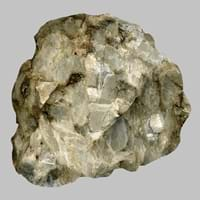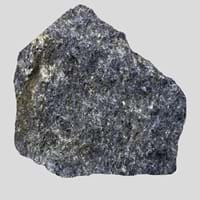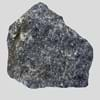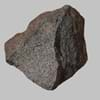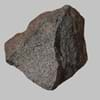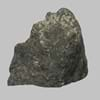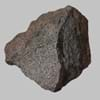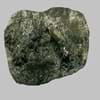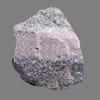Definition
Sovite is a coarse-grained variety of carbonatite which belongs to intrusive igneous rock
Blueschist is a metamorphic rock which is generally blue in color and is formed under conditions of high pressure and low temperature
Discoverer
Unknown
Edgar Bailey
Etymology
Not Available
From French schiste, Greek skhistos i.e. split
Class
Igneous Rocks
Metamorphic Rocks
Sub-Class
Durable Rock, Soft Rock
Durable Rock, Medium Hardness Rock
Group
Plutonic
Not Applicable
Other Categories
Coarse Grained Rock, Fine Grained Rock, Medium Grained Rock, Opaque Rock
Fine Grained Rock, Medium Grained Rock, Opaque Rock
Texture
Granular, Poikiloblastic
Foliated
Color
Black, Brown, Colourless, Green, Grey, Pink, White
Blue, Bluish - Grey, Purple, Shades of Blue
Durability
Durable
Durable
Appearance
Dull, Banded and Foilated
Dull and Banded
Interior Uses
Decorative Aggregates, Homes
Floor Tiles, Flooring, Homes, Hotels, Kitchens
Exterior Uses
As Building Stone, Garden Decoration, Office Buildings
Garden Decoration, Office Buildings
Other Architectural Uses
Curbing
Not Yet Used
Construction Industry
As a Flux in the Production of Steel and Pig Iron, As a Sintering Agent in Steel Industry to process Iron Ore, As Dimension Stone, Cement Manufacture, for Road Aggregate, Making natural cement, Manufacture of Magnesium and Dolomite Refractories, Unknown, Unknown
As Dimension Stone, Cobblestones, Rail Track Ballast, Roadstone
Medical Industry
Taken as a Supplement for Calcium or Magnesium
Not Yet Used
Antiquity Uses
Artifacts
Artifacts, Monuments, Sculpture
Commercial Uses
An Oil and Gas Reservoir, As a Feed Additive for Livestock, Creating Artwork, Gemstone, Metallurgical Flux, Production of Lime, Soil Conditioner, Source of Magnesia (MgO)
Cemetery Markers, Commemorative Tablets, Creating Artwork, Curling, Tombstones
Types
Not Available
Not Available
Features
Available in lots of colors, Generally rough to touch, Is one of the oldest rock
Has High structural resistance against erosion and climate, Very fine grained rock
Archaeological Significance
Monuments
Not Yet Used
Used
Famous Monuments
Not Applicable
Data Not Available
Sculpture
Not Yet Used
Used
Famous Sculptures
Not Applicable
Data Not Available
Figurines
Not Yet Used
Used
Formation
Sovites are formed due to low degrees of partial melting of rocks.
Blueschist forms due to the metamorphism of basalt and other rocks with similar composition at high pressures and low temperatures and approximately corresponding to a depth of 15 to 30 kilometers and 200 to 500 °C.
Mineral Content
Ancylite, Apatite, Barite, Fluorite, Magnetite, Natrolite, Sodalite
Albite, Chlorite, Epidote, Garnet, Glaucophane, Lawsonite, Muscovite or Illite, Quartz
Compound Content
CaO, Carbon Dioxide, Sodium Oxide
Aluminium Oxide, CaO, Iron(III) Oxide, FeO, Potassium Oxide, MgO, MnO, Sodium Oxide, Phosphorus Pentoxide, Silicon Dioxide, Titanium Dioxide
Types of Metamorphism
Burial Metamorphism, Cataclastic Metamorphism, Contact Metamorphism, Hydrothermal Metamorphism, Impact Metamorphism, Regional Metamorphism
Not Applicable
Types of Weathering
Biological Weathering, Chemical Weathering, Mechanical Weathering
Mechanical Weathering
Types of Erosion
Chemical Erosion, Coastal Erosion, Glacier Erosion, Sea Erosion, Water Erosion, Wind Erosion
Chemical Erosion, Coastal Erosion, Water Erosion, Wind Erosion
Grain Size
Medium to Fine Coarse Grained
Fine to Medium Grained
Fracture
Conchoidal
Conchoidal
Streak
White
White to Grey
Porosity
Less Porous
Highly Porous
Luster
Subvitreous to Dull
Dull
Cleavage
Not Available
Slaty
Specific Gravity
2.86-2.87
3-3.2
Transparency
Opaque
Opaque
Density
2.84-2.86 g/cm3
2.8-2.9 g/cm3
Resistance
Heat Resistant, Pressure Resistant
Impact Resistant, Pressure Resistant
Deposits in Eastern Continents
Asia
China, India, Kazakhstan, Mongolia, Russia, Uzbekistan
Japan, Turkey
Africa
Namibia, Nigeria, South Africa
Egypt, Ethiopia, South Africa
Europe
Austria, Denmark, Germany, Great Britain, Netherlands, Norway, Poland, Sweden, Switzerland, United Kingdom
France, Greece, Iceland
Others
Greenland
Not Yet Found
Deposits in Western Continents
North America
Canada, USA
USA
South America
Brazil
Not Yet Found
Deposits in Oceania Continent
Australia
New South Wales, New Zealand
New Zealand
All about Sovite and Blueschist Properties
Know all about Sovite and Blueschist properties here. All properties of rocks are important as they define the type of rock and its application. Sovite belongs to Igneous Rocks while Blueschist belongs to Metamorphic Rocks.Texture of Sovite is Granular, Poikiloblastic whereas that of Blueschist is Foliated. Sovite appears Dull, Banded and Foilated and Blueschist appears Dull and Banded. The luster of Sovite is subvitreous to dull while that of Blueschist is dull. Sovite is available in black, brown, colourless, green, grey, pink, white colors whereas Blueschist is available in blue, bluish - grey, purple, shades of blue colors. The commercial uses of Sovite are an oil and gas reservoir, as a feed additive for livestock, creating artwork, gemstone, metallurgical flux, production of lime, soil conditioner, source of magnesia (mgo) and that of Blueschist are cemetery markers, commemorative tablets, creating artwork, curling, tombstones.
